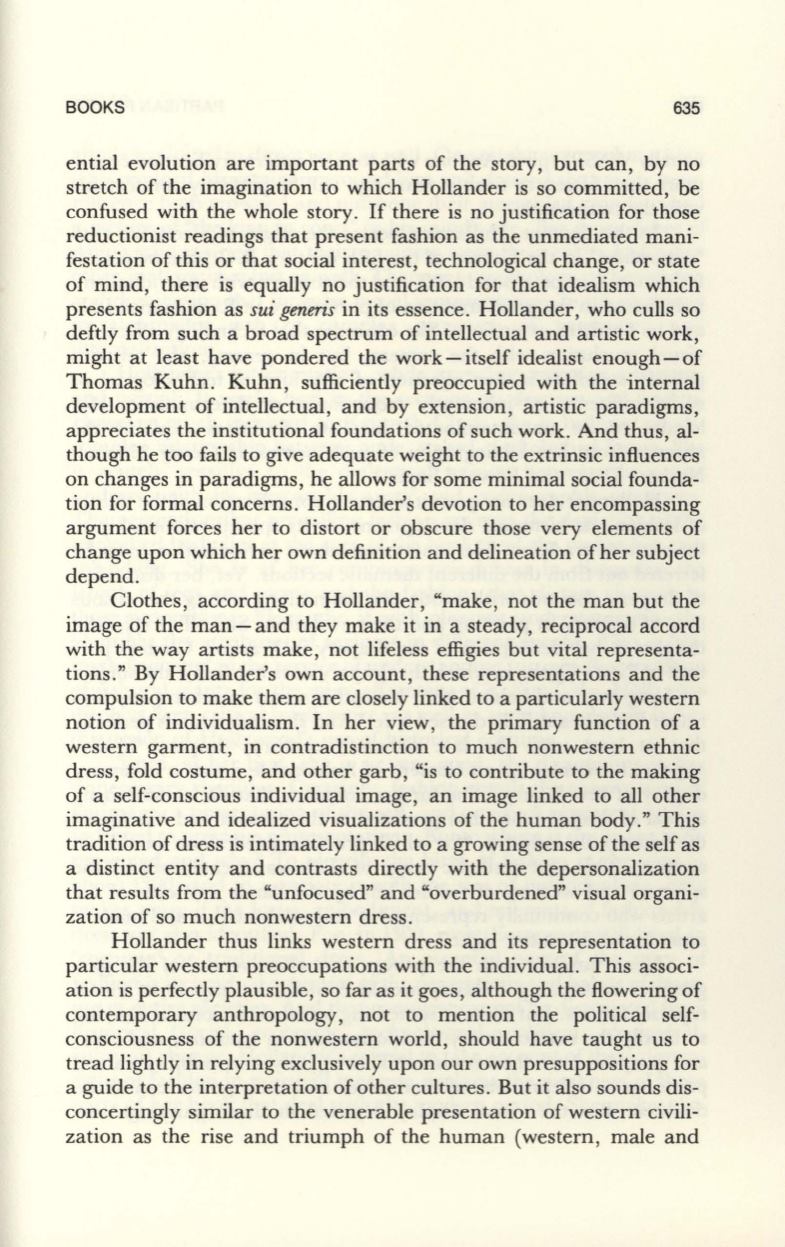
BOOKS
635
ential evolution are important parts of the story, but can, by no
stretch of the imagination to which Hollander is so committed, be
confused with the whole story.
If
there is no justification for those
reductionist readings that present fashion as the unmediated mani–
festation of this or that social interest, technological change, or state
of mind, there is equally no justification for that idealism which
presents fashion as
sui generis
in its essence. Hollander, who culls so
deftly from such a broad spectrum of intellectual and artistic work,
might at least have pondered the work - itself idealist enough - of
Thomas Kuhn . Kuhn , sufficiently preoccupied with the "internal
development of intellectual, and by extension, artistic paradigms,
appreciates the institutional foundations of such work. And thus, al–
though he too fails to give adequate weight to the extrinsic influences
on changes in paradigms, he allows for some minimal social founda–
tion for formal concerns . Hollander's devotion to her encompassing
argument forces her to distort or obscure those very elements of
change upon which her own definition and delineation of her subject
depend.
Clothes, according to Hollander, "make, not the man but the
image of the man - and they make it in a steady, reciprocal accord
with the way artists make, not lifeless effigies but vital representa–
tions ." By Hollander's own account , these representations and the
compulsion to make them are closely linked to a particularly western
notion of individualism. In her view, the primary function of a
western garment , in contradistinction to much nonwestern ethnic
dress, fold costume, and other garb, "is to contribute to the making
of a self-conscious individual image, an image linked to all other
imaginative and idealized visualizations of the human body." This
tradition of dress is intimately linked to a growing sense of the self as
a distinct entity and contrasts directly with the depersonalization
that results from the "unfocused" and "overburdened" visual organi–
zation of so much nonwestern dress.
Hollander thus links western dress and its representation to
particular western preoccupations with the individual . This associ–
ation is perfectly plausible, so far as it goes , although the flowering of
contemporary anthropology, not to mention the political self–
consciousness of the nonwestern world, should have taught us to
tread lightly in relying exclusively upon our own presuppositions for
a guide to the interpretation of other cultures. But it also sounds dis–
concertingly similar to the venerable presentation of western civili–
zation as the rise and triumph of the human (western , male and


